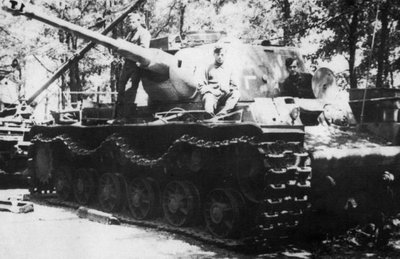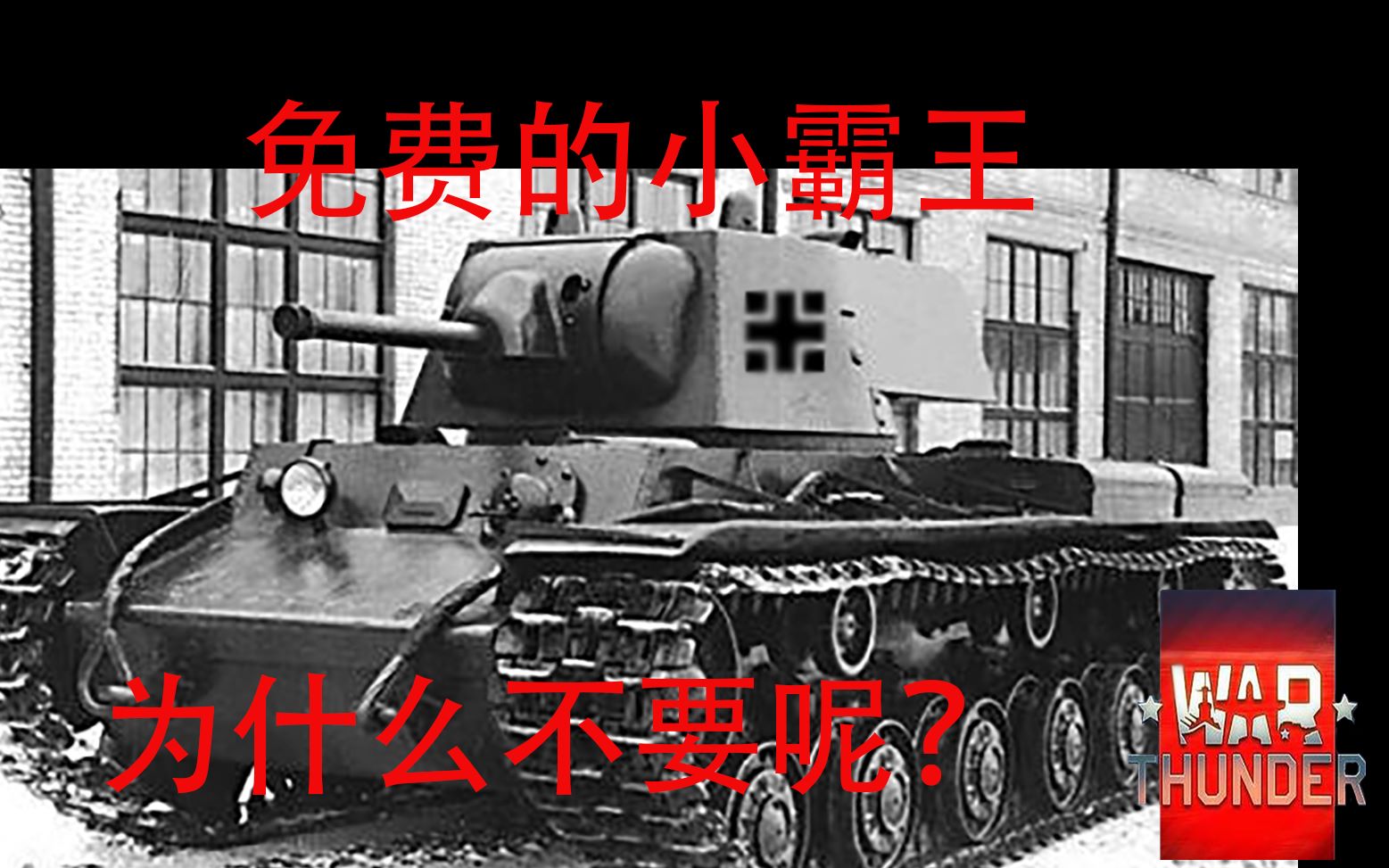


The earliest known Beutepanzer KV-1s, which in the German numbering system were known as the Pz.KpfW KV-1a 753 (r) (r = Russia) were deployed in the Autumn of 1941. However, there were some KV tanks pressed into Wehrmacht service. The overwhelming majority of these tanks were either dismantled at the roadside or returned to the Reich for museums or testing. The number for KV tanks of all sub-types was “E I”. In 1941, the Germans had a categorizing system for those units captured from the enemy, this was an “Ebeuten” number. The captured tanks were known as ‘Beutepanzer’ or trophy tanks. Contrary to popular belief, there were only a handful of KV-1 tanks that were ever pressed into German service. When the Wehrmacht first encountered the KV-1, they were horrified and greatly impressed with its capability to take extreme punishment from the main German tank and anti-tank guns of the time. However, the gun was similar to the one on the T-34 medium tank, which was far more mobile and far cheaper to build. In 1942, this made the gun a significant threat to most German tanks. The F-32 gun could penetrate 50mm of armor at 1,000m, whereas the Zis-5 gun could penetrate 60mm of armor at the same range. The firepower was improved too, from the 30.2 caliber long F-32 76.2mm gun, to the 42.5 caliber long 76.2mm Zis-5 gun. Soviet engineers constantly updated the tank and, between 19, the armor was thickened from 90mm to 200mm in places. The suspension was the first Soviet use of torsion bars, and it consisted of six road wheels, a rear drive wheel, a large front idler wheel and three return rollers. The KV-1 tank weighed 45 tons and was powered by the 660hp V2K engine. Poor crew training, poor logistical support and inept command and control meant that the Soviet tanks, including the mighty KV-1, where deployed in small packets that were easily swallowed and terminated by the better organized German units. However, the KV-1s made little impact on the actual fighting during the months of Operation Barbarossa, with the exception of a small number of engagements.

Many KV-1s returned from combat peppered with dents and gouges from ricochets which had failed to penetrate its armor. The KV-1 quickly gained a fearsome reputation on the battlefield, being able to withstand point-blank shots from the standard 37mm anti-tank guns fielded by Germany. The KV-1 was an unpleasant surprise to the advancing Germans in June 1941, due to its excellent armor protection. Immediately prior to the invasion of the USSR in June 1941, roughly 508 KV-1 tanks were in Red Army service. The KV tank beat the SMK and T-100 to make it to mass production.

B mit 10.The KV-1 was the unsuspecting winner of a Soviet contract for a new heavy tank to replace the obsolete T-35A Multi Turreted Heavy Tank.


 0 kommentar(er)
0 kommentar(er)
